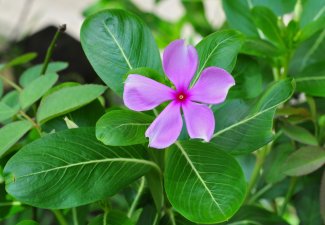Catharanthus roseus, commonly known as the Madagascar periwinkle, is a species of Catharanthus native and endemic to Madagascar.
Noted as annual or perennial forb, shrub, or subshrub. Widespread ornamental subshrub of Malagasy origin with attractive pink or white flowers, a source of powerful anticancer drugs. Madagascar periwinkle is a perennial that readily establishes itself in tropical and subtropical areas to which it is introduced. Its flowers are probably pollinated by butterflies and moths, as the floral structure is adapted to pollination by a long-tongued insect (Albers and van der Maesen, 1994). Unlike most species in its family, Madagscar periwinkle is self-compatible; self-pollination may be relatively uncommon in practice, although certain genetic variants have been identified whose floral structure is physically conducive to intraflower self-pollination (Kulkarni et al. 2005).
Madagascar periwinkle is widely cultivated as an ornamental. Large quantities of material are required for production of the anticancer alkaloids vincristine and vinblastine or derivatives thereof, which to date cannot be manufactured synthetically. A substantial body of research exists regarding means of enhancing indole alkaloid production in cell and tissue cultures.
